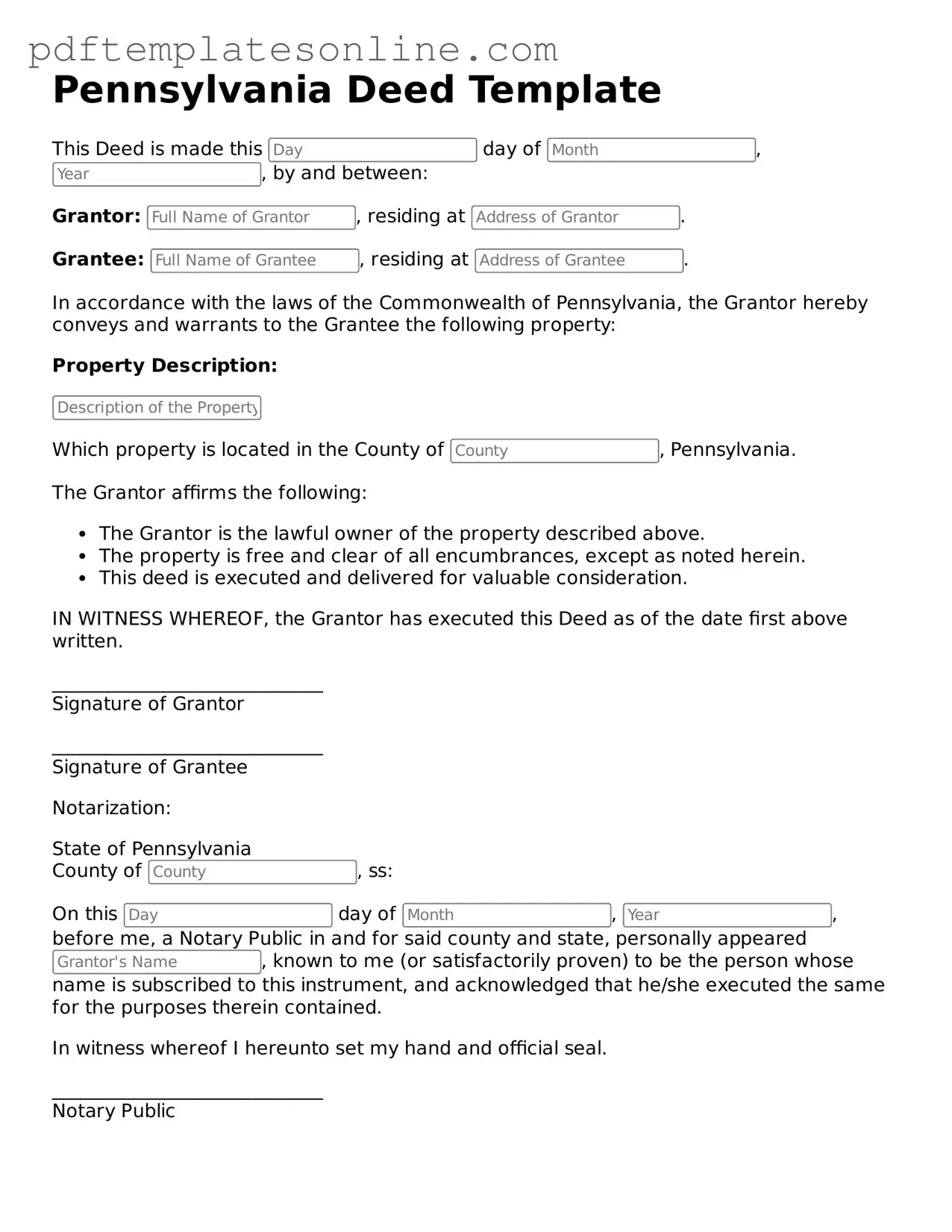Official Pennsylvania Deed Document
The Pennsylvania Deed form is a legal document used to transfer ownership of real property from one party to another. This form outlines the details of the transaction, including the parties involved and the property description. Properly executed, it serves as a critical instrument in real estate transactions within the state.
Access Deed Editor Now
